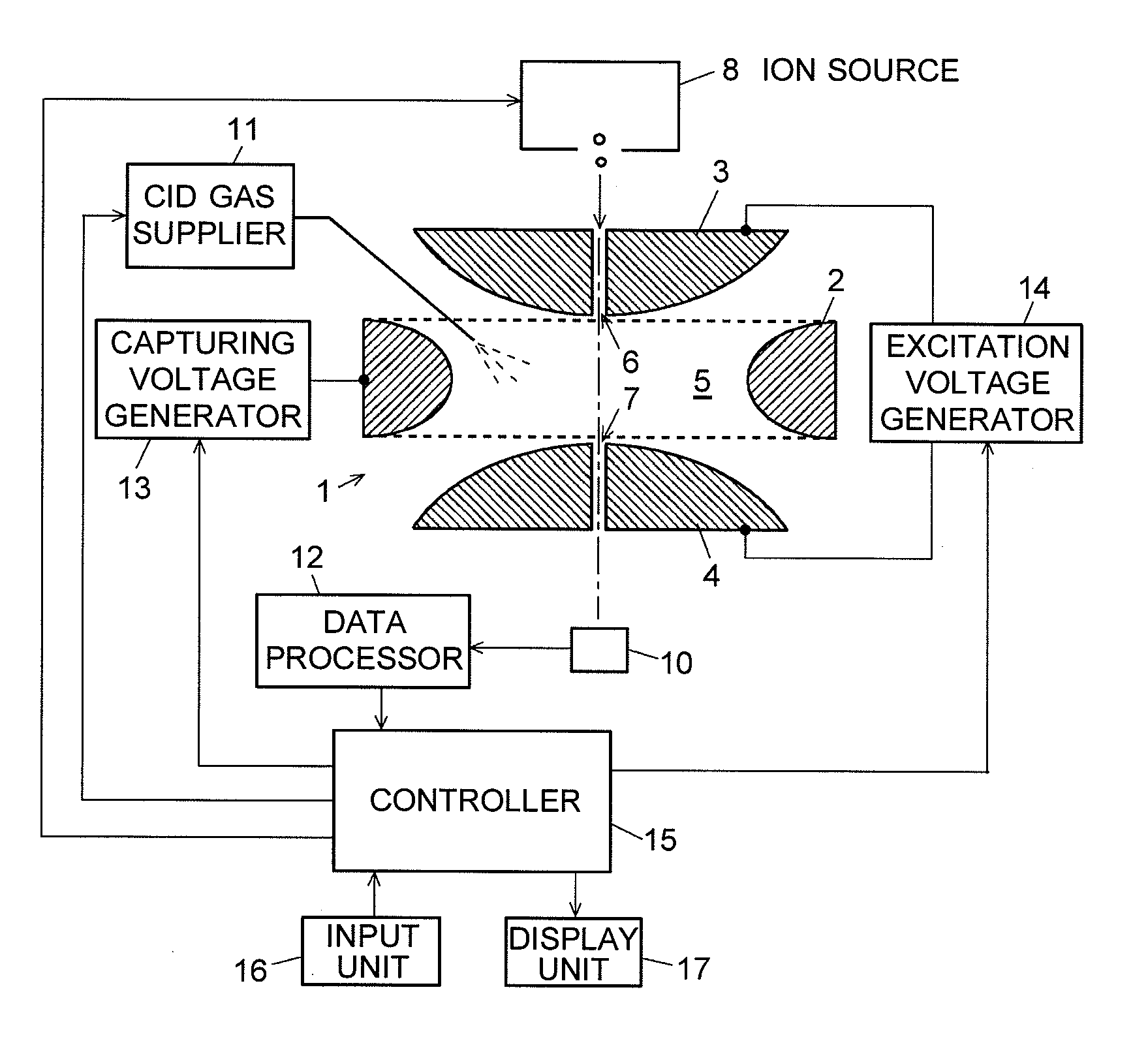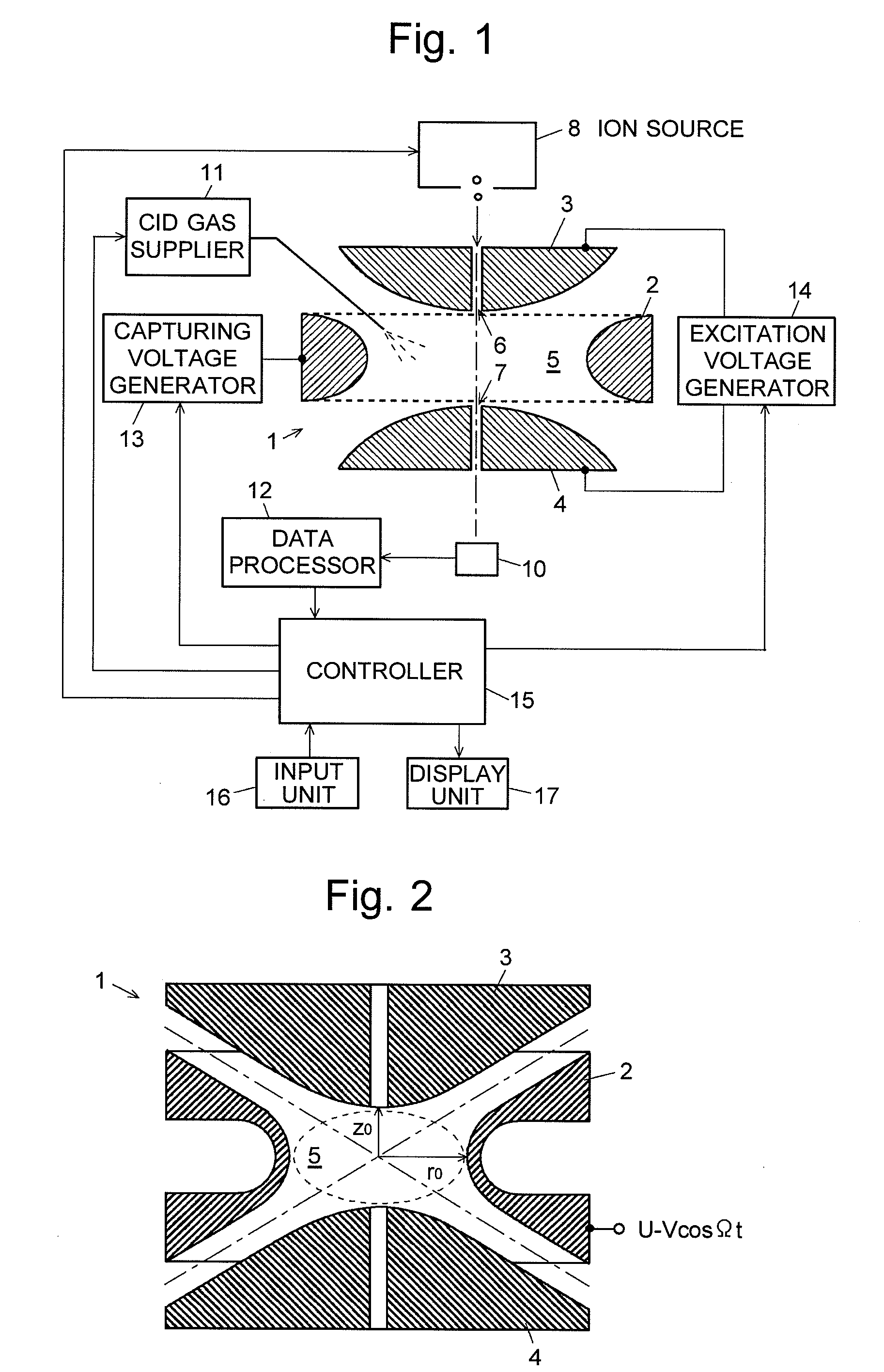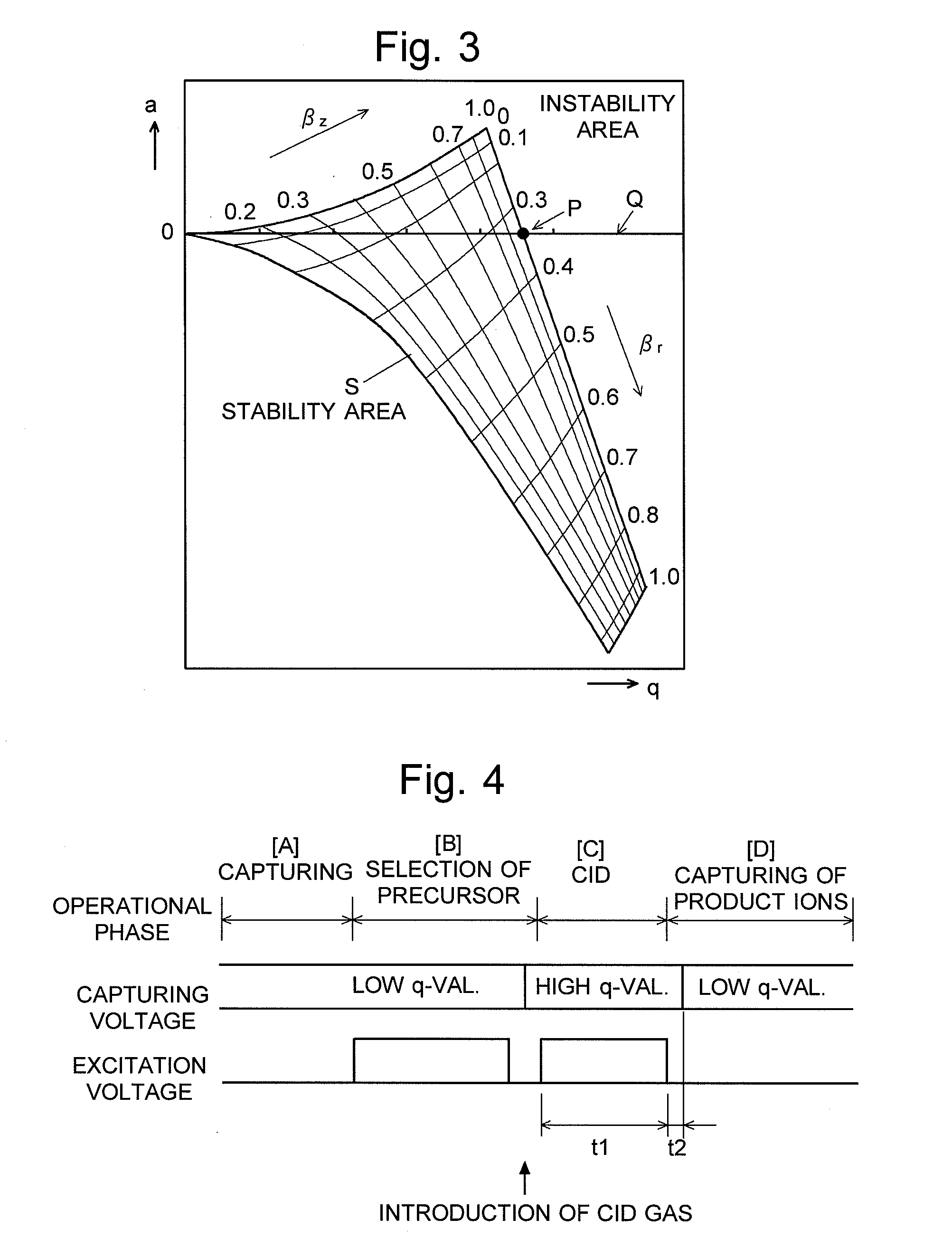Mass-analysis method and mass-analysis apparatus
- Summary
- Abstract
- Description
- Claims
- Application Information
AI Technical Summary
Benefits of technology
Problems solved by technology
Method used
Image
Examples
Embodiment Construction
[0048]This section details the structure and operation of an ion trap mass spectrometer (IT-MS) as an embodiment of the second aspect of the present invention for carrying out the mass-analysis method according to the first aspect of the present invention. FIG. 1 is a general configuration diagram of the IT-MS of the present embodiment. The components of the ion trap are denoted by the same numerals as already used in FIG. 2.
[0049]As explained previously, the ion trap 1 includes a ring electrode 2 and end-cap electrodes 3 and 4. The ring electrode 2 is connected with a capturing voltage generator 13, while the end-cap electrodes 3 and 4 are connected with an excitation voltage generator 14. An ion source 8 is located outside the injection port 6 formed approximately at the center of the inlet end-cap electrode 3. Molecular ions generated by the ion source 8 will be introduced through the injection port 6 into the ion-trapping space 5. The exit end-cap electrode 4 has an ejection por...
PUM
 Login to View More
Login to View More Abstract
Description
Claims
Application Information
 Login to View More
Login to View More - R&D
- Intellectual Property
- Life Sciences
- Materials
- Tech Scout
- Unparalleled Data Quality
- Higher Quality Content
- 60% Fewer Hallucinations
Browse by: Latest US Patents, China's latest patents, Technical Efficacy Thesaurus, Application Domain, Technology Topic, Popular Technical Reports.
© 2025 PatSnap. All rights reserved.Legal|Privacy policy|Modern Slavery Act Transparency Statement|Sitemap|About US| Contact US: help@patsnap.com



